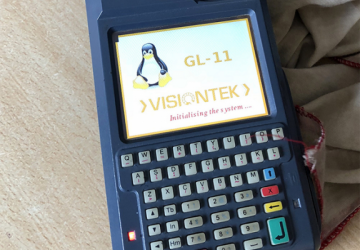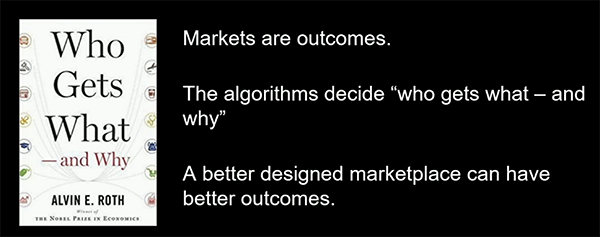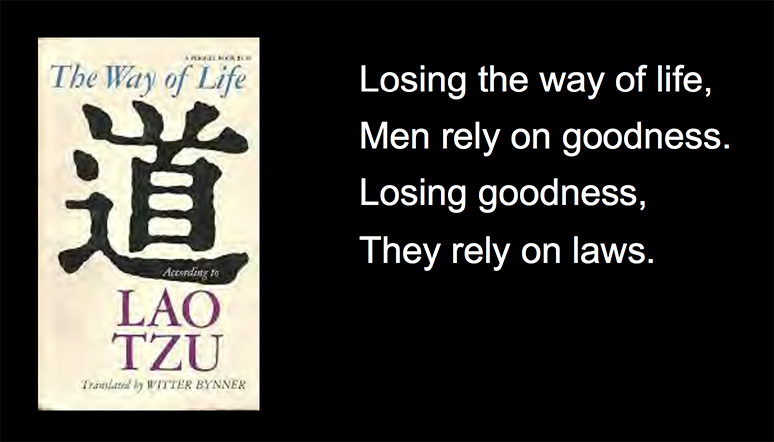OSCON at 19, Open Source at 20, Linux at 27

Cooperation isn't as exciting as conflict, but it does get the most done.
Now that Linux has achieved World Domination, seems it has nothing but friends. Big ones.
That was my first take-away from O'Reilly's 19th OSCON in Portland, Oregon. This one celebrated 20 years of Open Source, a category anchored by Linux, now aged 27. The biggest sponsors with the biggest booths—Microsoft, AWS, Oracle, Salesforce, Huawei—are all rare-metal-level members of the Linux Foundation, a collection that also includes pretty much every tech brand you can name, plus plenty you can't. Hats off to Jim Zemlin and the LF crew for making that happen, and continuing to grow.
My second take-away was finding these giants at work on collective barn-raising. For example, in his keynote, The whole is greater than the sum of its parts. (sponsored by IBM), Chris Ferris, IBM's CTO for Open Technology, told the story behind Hyperledger, a collaborative effort to foster cross-industry blockchain technologies. Hyperledger was started by Chris and friends at IBM and handed over to the Linux Foundation, where it is headed by Brian Behlendorf, whose long history with open source began with Apache in the mid-1990s.
In an interview I did with Chris afterwards, he enlarged on examples of collaboration between development projects within Hyperledger, most of which are led by large companies that are more accustomed to competing than to cooperating. A corollary point might be that the best wheels are the ones not re-invented.
I got the same impressions from conversations with folks from AWS and Microsoft.
In the case of AWS, I was surprised to learn from Adrian Cockcroft, VP of Cloud Architecture at Amazon, that the company had found itself in the ironic position of supporting a massive amount of open-source development by others on its Linux-based clouds while also not doing much to cooperate on its own open-source developments. Now, led by Adrian, it's working hard at changing that. (To help unpack what's going on there, I got shots of Adrian and some of his slides, which you can step through starting here in our OSCON 2018 photo album.)
In the case of Microsoft, Kim Cameron told me before OSCON that the company's support of Linux and open source is no small thing: it's entirely on board. And that was the clear message at the Microsoft booth. Alas, I haven't yet had a chance to talk with either Nat Friedman (now CEO of GitHub, recently bought by Microsoft) or Miguel De Icaza, both of whom are parents of GNOME and have long been Microsoft employees. I'm sure their influence was involved. Anyway, stay tuned for a subsequent report on that.
My third take-away was that the biggest revolutions, as usual, can be found starting in booths on the periphery of the exhibition floor. For example, the Mifos Initiative. (Here's the booth.) Mifos, which stands for Microfinance Open Source, has a Common Platform with the potential, I believe, to completely re-make banking—not by taking its core functions out of the hands of that industry's corporate giants, but by giving those functions to financial enterprises of any size, anywhere in the world. You want to make a bank? Mifos has the components you need. No need for expensive tech-as-a-service (or service-as-a-service) providers. Among other things, Ed Cable, President & CEO of Mifos, told me the Initiative recently gave its code to the Apache foundation (coincidentally right there in the next booth), in the same spirit as IBM giving Hyperledger to the Linux Foundation.
By coincidence, I had seen Mifos at work a couple days earlier in Vijayawada, a small city in India. (Well, small for India. The population is a little over a million people, and it's the third-most densely populated city on Earth.) The demonstration was arranged by friends with the Omidyar Network, and was by IDFC Bank, using Novopay and Mifos. Novopay uses Linux too. (Here's my Vijayawada album, and here's a successful use of one Mifos component.)
The fifth take-away was that embedded Linux is one of the greatest inventions in the history of civilization—one perhaps equal to frame construction (invented in Chicago in the mid-1800s). That one I gathered in a village beside vast rice farms on the outskirts of Vijayawada, when I saw the piece of tech pictured above (and starting here in the Vijayawada photo album). That thing is a VISIONTEK G-11, a does-it-all wireless POS (point-of-sale) terminal, called into the world by Aadhaar, India's personal identity system, and the world's largest (numbering over a billion) biometric ID system.
In my March 2002 column here, titled A Tale of Three Cultures, I contrasted embedded culture with those of Hollywood and the geek culture of which Linux Journal and its readers have always been a part. About embedded culture, I said this: "It's pre-Net, pre-UNIX and maybe even pre-cultural. It shows up where raw technology meets the real world, and its concerns are utterly practical. 'Here's the problem', it says. 'Let's solve it'. This is a heads-down culture and civilization depends on it. Embedded systems are what run our cash registers and brake systems, our airplane guidance systems, our factory robotics, our flow meters, our stoplights and our heating systems."
At the time, Linux was still new to that culture. Now it's the main thing, or close enough. Other cultures come and go, but the embedded development one is locked. Cooperation is part of that one too, but it's different.
Which brings me to my sixth and final take-away: we live in the land of giants, but not permanently. In a way, that was Tim O'Reilly's main point in his opening keynote, Open source and open standards in the age of cloud AI, subtitled "...how we can extend the values and practices of open source in the age of AI, big data, and cloud computing." In that talk, he lamented the degree to which our world is now that of giant silo'd service providers. He talked about how curious and self-taught the Open Source community tends to be, and shared cautions in a pair of slides that stick with me, but for different reasons.
The first is this one:

I don't think algorithms alone should, or do, decide "who gets what — and why". Nor do I think designing a market is up to corporate giants on which our laws or wishes might be imposed.
Nobody runs frame construction. Nobody runs open source. Nobody runs Linux (even Linus). All are too open for that.
"We already see the failure modes", Tim said. He wasn't talking about adtech and martech — advertising and marketing that relies utterly on personal data harvested wantonly and without the human sources' permission — but as failures go, it's possibly as massive as the one we had with subprime mortgages in the late 2000s. Both are characterized by massive fraud, complexity, absent accountability and delusions sustained by tendentious maths.
I didn't see any failure modes in Vijayawada, or anywhere I saw tech deployed in India. What I saw was human resourcefulness cranked to the max by necessities that are mostly invisible in Silicon Valley.
With that in mind, here is another of Tim's slides:

(Or at least I think it was Tim's...I'm losing track, I'm out of time, and it's beside the points that follow.)
Lately I've been as guilty as anyone else in thinking regulations such as the GDPR, ePrivacy and California's new privacy law are going to fix things. They can't.
The way of life in open source, and free software before it, has been entirely generous, by design. Generosity is the transcendent principle I could see running through everything I witnessed on opposite sides of the world in the last two weeks. And that, more than anything else, sustains the optimism I've had since I first learned about Liniux more than a quarter century ago.










